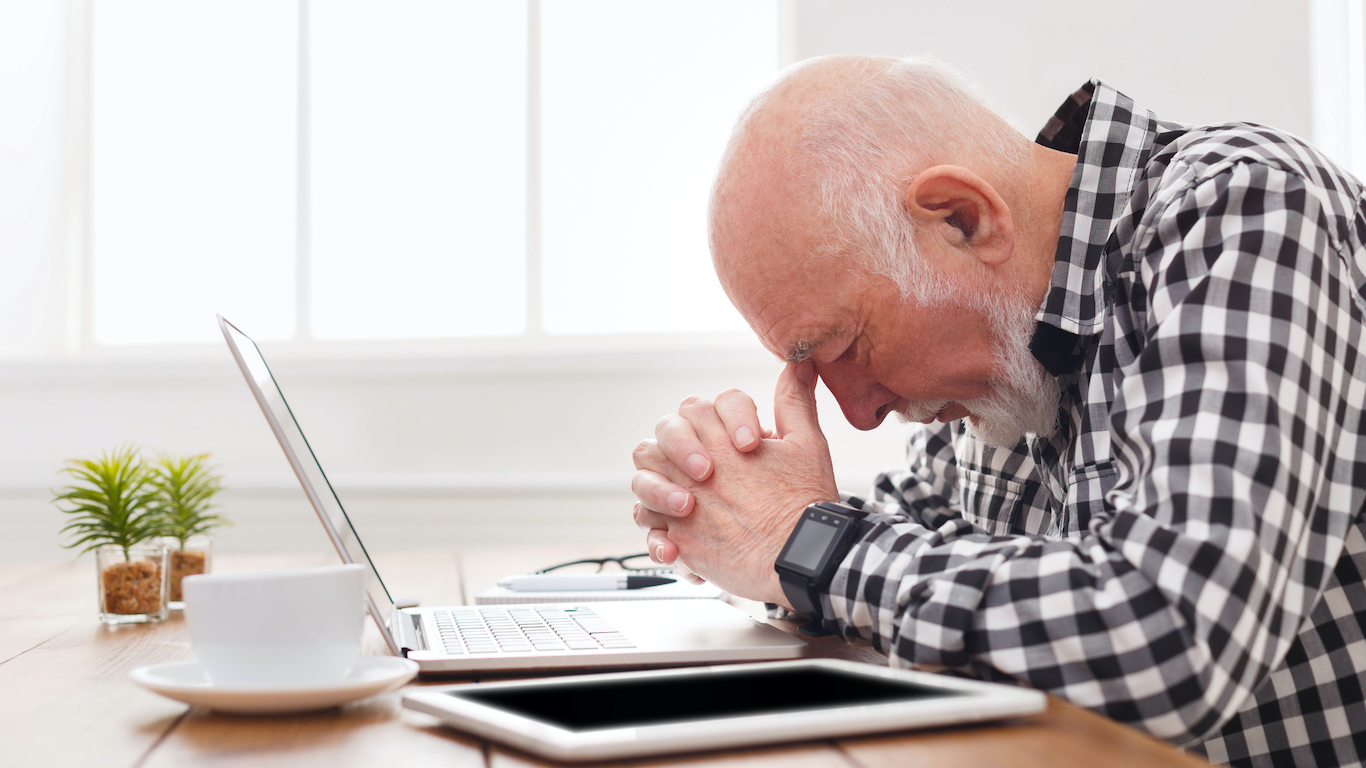
Federally funded expanded unemployment benefits that started in March and ended on July 31 reduced the percentage of Americans living below the federal poverty line to its lowest level since January of 2019. During the months of May and June, 9.3% of Americans were living below the poverty line, compared to 12.8% in February 2019.
Once the weekly $600 payments ended, the percentage rose to 10.3% in July, 10.5% in August and 11.1% in September. For a family of four, the national poverty line is $26,200 this year.
The data was compiled by economists at the University of Chicago, Notre Dame University and Zhejiang University, and an interactive chart shows the percentage of Americans living below 100%, 200%, 300% and 500% of the official poverty line.
Since the pandemic first hit the United States in February, more than 75 million Americans have filed for unemployment insurance. As of Thursday’s report on new claims for unemployment benefits, nearly 900,000 claims were filed in the week ended October 10 and a total of 10.12 million Americans are still unemployed.
According to the economists’ report, the increase in poverty over the past three months was “more noticeable for blacks, children, and those with a high school education or less.” The evidence also indicates that poverty rose more in those states with “less effective unemployment insurance systems.”
In a ranking completed in April, Zippia.com rated Florida, South Carolina, Louisiana, Arizona and North Carolina as the five states (in that order) with the worst unemployment systems. The rankings were based on maximum weekly benefits, maximum weeks for benefits to be paid and the percentage of unemployed people actually receiving benefits. Florida’s maximum weekly benefit of $275 is available for just 12 weeks, and only 18.7% of the state’s unemployed people receive even these paltry benefits.
At the other end of the rankings, Massachusetts and New Jersey were rated at the top. Both pay benefits for 26 weeks. Massachusetts at a weekly rate of $823 and New Jersey at $713. Nearly two-thirds of New Jersey’s unemployed receive benefits, while 58% of Massachusetts residents do.
The deadlock over extending expanded federal benefits beyond July 31 may not be broken until after the November election, although the president keeps pushing for a package of around $1.8 trillion and Democratic House Speaker Pelosi is holding out for a minimum of around $2.2 trillion.
As the economists note, however, “the entire decline [for March through June] in poverty can be accounted for by the one-time stimulus checks the federal government issued” in April and May and “the [federal] expansion of unemployment insurance eligibility and benefits.” Without that aid, “poverty would have risen sharply.”
Are You Still Paying With a Debit Card?
The average American spends $17,274 on debit cards a year, and it’s a HUGE mistake. First, debit cards don’t have the same fraud protections as credit cards. Once your money is gone, it’s gone. But more importantly you can actually get something back from this spending every time you swipe.
Issuers are handing out wild bonuses right now. With some you can earn up to 5% back on every purchase. That’s like getting a 5% discount on everything you buy!
Our top pick is kind of hard to imagine. Not only does it pay up to 5% back, it also includes a $200 cash back reward in the first six months, a 0% intro APR, and…. $0 annual fee. It’s quite literally free money for any one that uses a card regularly. Click here to learn more!
Flywheel Publishing has partnered with CardRatings to provide coverage of credit card products. Flywheel Publishing and CardRatings may receive a commission from card issuers.
Thank you for reading! Have some feedback for us?
Contact the 24/7 Wall St. editorial team.
 24/7 Wall St.
24/7 Wall St.

